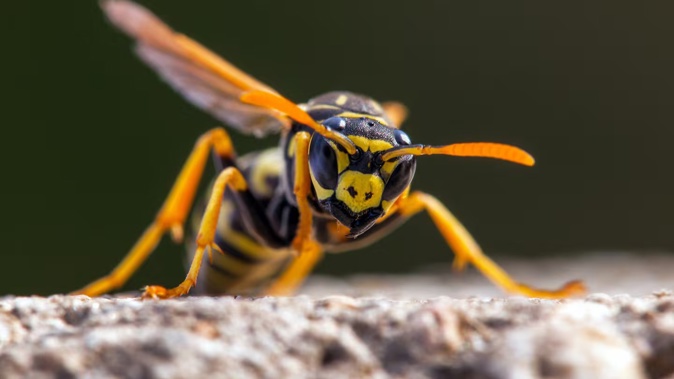
Kem Ormond takes a look at the world of farming back in the day.
Back in 1949, you could get free DDT if you found wasps on your property and you wanted to destroy them.
Thank goodness, there are other methods now available to rid our homes, buildings, and outdoor areas of wasps.
DDT (dichlorodiphenyltrichloroethane) was once widely used as an insecticide, including for killing wasps.
However, its use has been banned or heavily restricted in most countries, including New Zealand, due to serious environmental and health concerns.
It was highly effective at killing insects like mosquitoes, flies, lice, and wasps, due to its long-lasting residual effects, meaning one application could provide weeks or months of control.
DDT stopped being used because it was discovered that it accumulated in the food chain and had devastating effects on wildlife, especially birds.
It was found that it didn’t break down easily, contaminating soil and water for years.
Wasps: Rush For Free DDT Powder
Northern Advocate, March 25, 1949
AUCKLAND, Fri. (P.A.)—An offer of free DDT powder to people who located wasps’ nests has resulted in the Department of Agriculture being flooded with requests.
Mr C. R. Thomas, of the Department of Scientific and Industrial Research, has been doing research work on controlling the wasp.
Recently he destroyed six large nests near the Middlemore golf course and four at Clevedon.
He said the wasps were first located at Hamilton in 1945.
By last summer they had reached south to Taumarunui and north to the fringe of Auckland.
This year they had been reported at Palmerston North and Wanganui, and within 30 miles of Gisborne.
They were a nuisance more than an economic menace.
Recently, a heifer was stung to death, and two others were affected by stings.
No new wasps have invaded the Gisborne District
Gisborne Herald, February 11, 1950
There have been no fresh signs of the threatened invasion of wasps into the district from the north, but this is the season when they should be noticed if present in the country behind Gisborne and on the East Coast, and the Department of Agriculture desires information concerning wasps found in any locality.
Fears that wasps would become established in Hawke’s Bay, expressed after the discovery of several queens last year, appear to have been realised.
A week ago, two nests were discovered at Waipawa and an Otane apiarist has killed a number of wasps in one of his hives.
The destruction of the two nests at Waipawa—one in an old tree stump and the other in an old shop in the town’s main street—means that thousands of wasps have been prevented from becoming a menace.
The only signs of infiltration of the wasps to the areas north of Waipawa have been the discovery of two isolated queens, one at the Tomoana freezing works and the other in a railway wagon at Napier.
Wasps Making Nests
Te Awamutu Courier, March 1, 1950
The suggestion that wasps are likely to be non-existent this season is discounted by a local district farmer.
He stated on Monday that on his farm and the adjacent roadway 25 nests have been destroyed.
The wasps so far have not invaded houses as they are busily engaged making their nests.
The wasps gather around water troughs and they laden themselves with earth and fly to their nests, often dropping the earth near by.
The farmer said that it was an interesting sight, for the flight of the wasps could be followed.
The Courier’s informant further said that he had destroyed the nests with cyanide gas, which he had injected into the nests in the evening.
He suggested that the Department of Agriculture could with advantage issue that gas to responsible persons who were to exercise the greatest care in its use as it was poisonous.
Early attacks on the nests should be made so as to prevent a repetition of last year’s plague of wasps.
Wasps Make Way to South Island
Rotorua Morning Post, April 30, 1952
NELSON, Tuesday.
The discovery of three nests in the Mapua-Ruby Bay area of the Nelson district provides definite evidence that the wasps of the species vespula germanica have spread to the South Island.
Individual wasps were first seen in the Nelson district last year and in the neighbouring Marlborough Province.
This year the three nests near Mapua are the first reported in the South Island.
They are all of the underground type and have been treated with D.D.T. by horticultural division officers.
- Source: Papers Past
Take your Radio, Podcasts and Music with you









